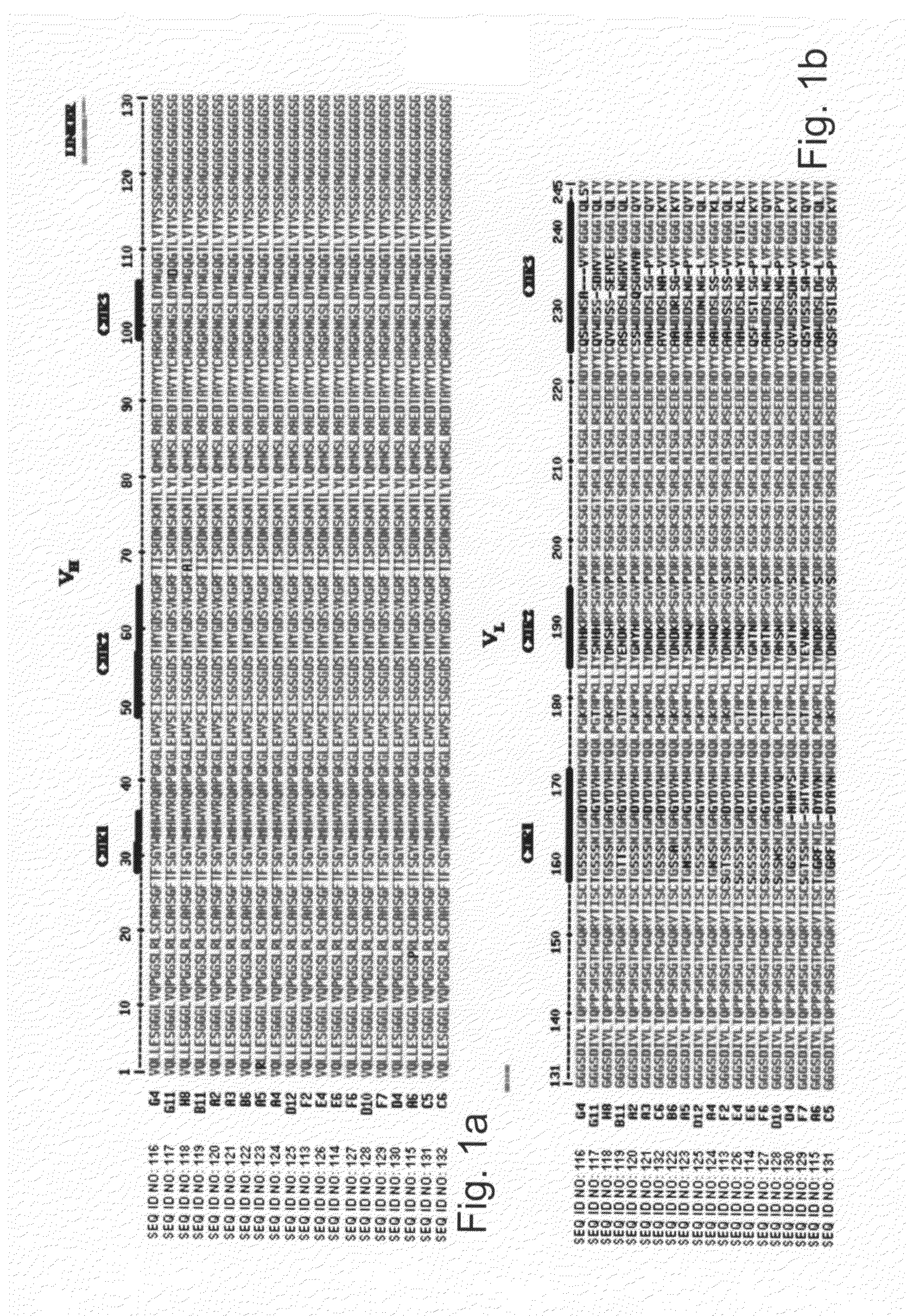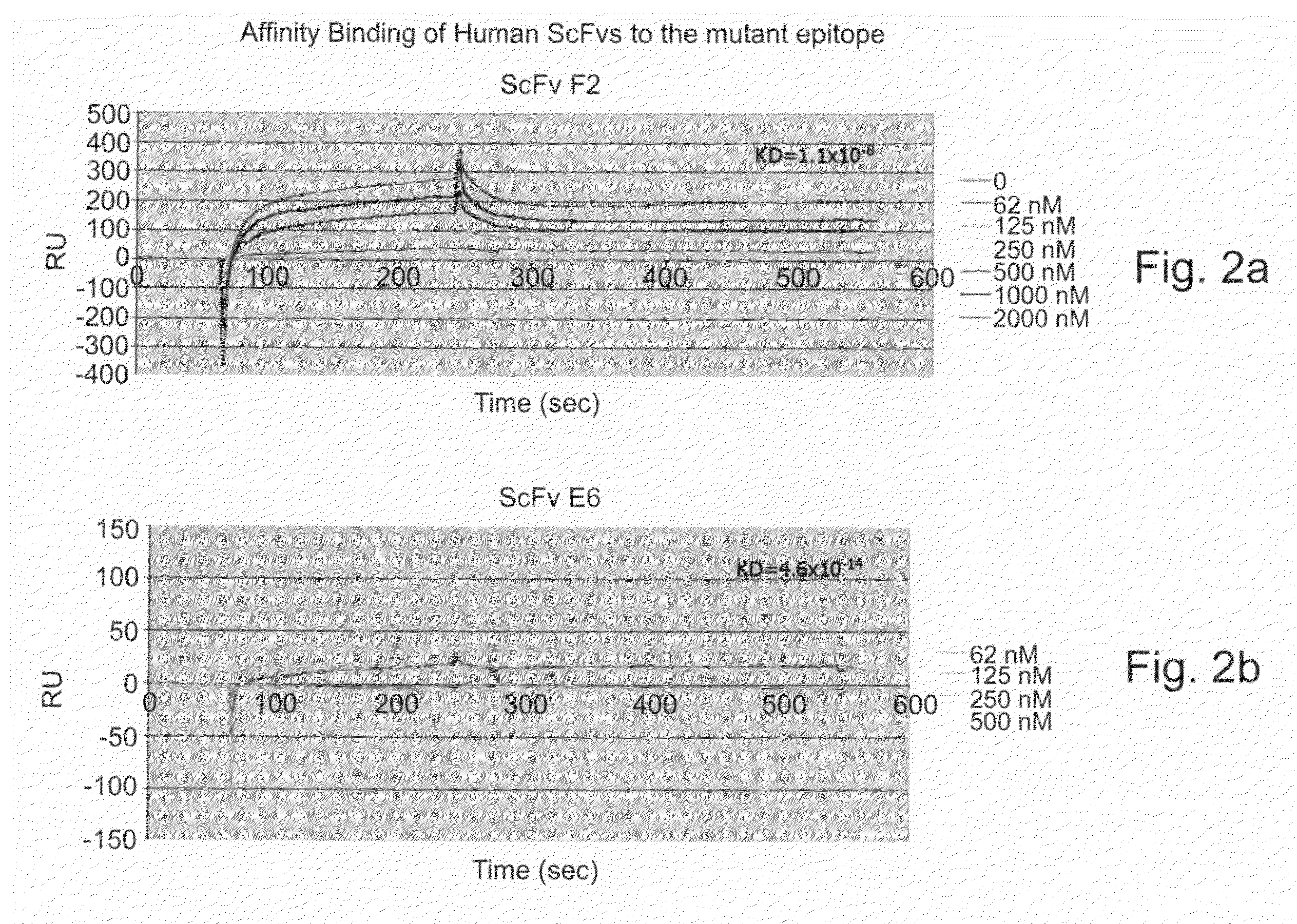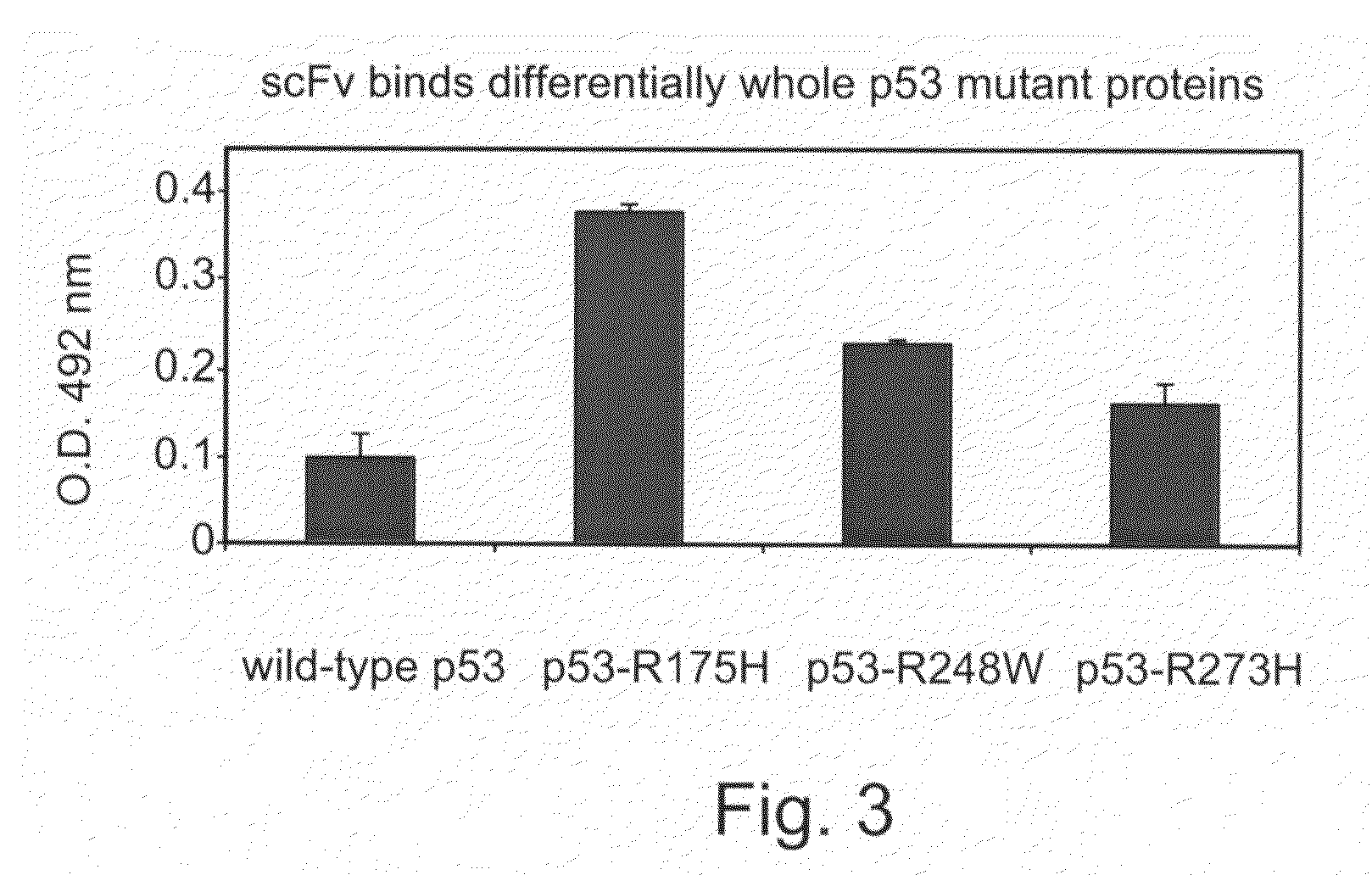Human synthetic single-chain antibodies directed against the common epitope of mutant P53 and their uses
a technology of p53 and human synthetics, which is applied in the field of cancer treatment using antibodies directed against p53 mutant proteins, can solve the problems of limited therapeutic application, peptides and compounds lack the ability to distinguish between the wild-type and mutant form of p53, and the use of p53 is limited
- Summary
- Abstract
- Description
- Claims
- Application Information
AI Technical Summary
Benefits of technology
Problems solved by technology
Method used
Image
Examples
example 1
SCFVs Bind the Common Epitope of Mutant p53 with High Affinity
[0239]To identify scFvs that specifically bind the mutant p53 common epitope, a human synthetic combinatorial library of arrayable single-chain antibodies (Azriel-Rosenfeld et al 2004 JMB 335, 177-192) was screened using the biotinylated FRHSVV (SEQ ID NO:1) peptide and the streptavidin Dynabeads (Dynal).
[0240]Twenty scFv clones were selected by biopanning using the common epitope of mutant p53—FIGS. 1a-b depict the amino acids sequences of the variable Heavy chain (VH) and variable light chain (VL) of the isolated scFvs selected by biopanning with the FRHSVV (SEQ ID NO:1) peptide of the common epitope of the mutant p53. Table 3, hereinbelow, depicts the amino acid sequences of the CDR1, CDR2 and CDR3 of the variable heavy chain of all scFv clones isolated and described in FIGS. 1a-b and Tables 4 and 5.
TABLE 3Variable heavy chainCDR1CDR2CDR3FSGYWMHWVEISGSGDSTHYGDSVKGGRNGSLDYW(SEQ ID NO: 5)(SEQ ID NO: 6)(SEQ ID NO: 7)Table...
example 2
The Isolated SCFVs Bind Whole Mutant P53 Proteins with Severe Conformational Changes
[0245]To demonstrate the binding capacity of the isolated scFvs to whole p53 molecules, ELISA plates were coated with recombinant wild-type p53 or mutant p53-R175H, p53-R248H and p53-R273W whole proteins which were produced in sf9 insect cells and 100-500 ng scFv F2 were added.
[0246]As is shown in F1G. 3, the F2 scFv (also designated herein as TAR1) purified antibody differentially bound to the various p53 proteins. While binding of the F2 scFv to the wild type p53 protein was relatively low (OD492 nm ˜0.1), binding to the p53 mutants exhibiting a severe conformational change (e.g., R175H) or an intermediate conformational change (e.g., R248W) was significantly high (OD492 nm >0.25). Thus, the severe conformational change in p53 protein which results in a higher exposure of the common mutant epitope is more susceptible to the antibodies of the present invention.
[0247]These results suggest the use of ...
example 3
The F2 SCFV Antibody (TAR1) Induces Apoptosis and Inhibit Colony Formation in Cells Expressing Mutant p53
[0248]The apoptotic activity of wild type p53 is a major contributor to its tumor suppressor function. However, this activity is lost when p53 is mutated. To determine whether F2 SCFV (TAR1) can restore the apoptotic function to mutant p53, cancer cell lines stably expressing the mutant R175H p53 protein were treated with TAR1 and the effect on apoptosis was determined using the FACS and TUNEL analyses, as follows.
[0249]F2 scFv (TAR1) is capable of inducing apoptosis—The purified isolated F2 scFv antibody (TAR1) was tested for its capacity to induce apoptosis in H1299 human lung carcinoma cells expressing the mutant R175H p53 protein. As is shown in FIGS. 4a-j and 15a-d, while in cells expressing the mutant R175H p53 protein treatment for 24 hours with the F2 scFv antibody (TAR1) caused apoptosis in a dose-dependent manner (e.g., ˜13% and ˜32% of apoptotic cells in the presence o...
PUM
| Property | Measurement | Unit |
|---|---|---|
| Molar density | aaaaa | aaaaa |
| Length | aaaaa | aaaaa |
| Composition | aaaaa | aaaaa |
Abstract
Description
Claims
Application Information
 Login to View More
Login to View More - R&D
- Intellectual Property
- Life Sciences
- Materials
- Tech Scout
- Unparalleled Data Quality
- Higher Quality Content
- 60% Fewer Hallucinations
Browse by: Latest US Patents, China's latest patents, Technical Efficacy Thesaurus, Application Domain, Technology Topic, Popular Technical Reports.
© 2025 PatSnap. All rights reserved.Legal|Privacy policy|Modern Slavery Act Transparency Statement|Sitemap|About US| Contact US: help@patsnap.com



